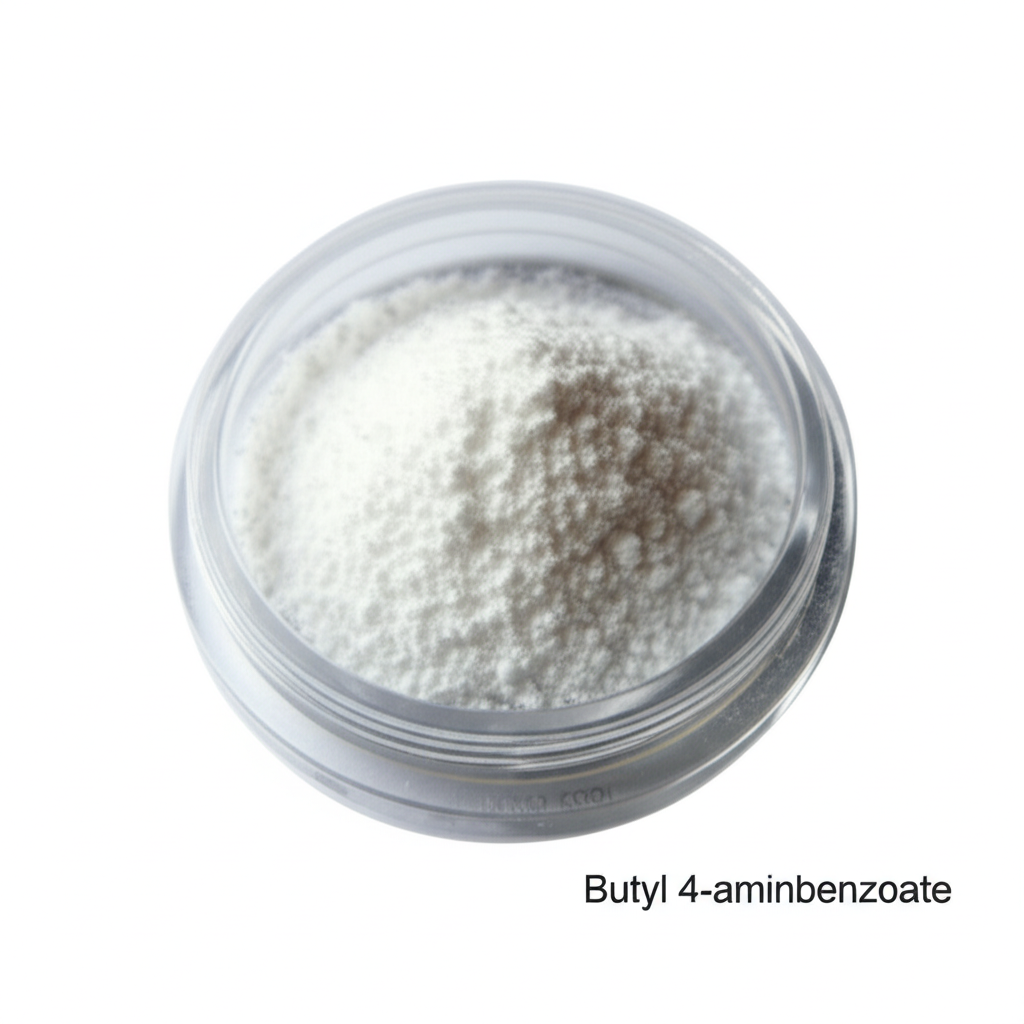Butyl 4-Aminobenzoate: Properties, Applications, and Market Insights
Discover the essential details and uses of this vital chemical intermediate in the pharmaceutical and cosmetic industries.
Get a Quote & SampleProduct Core Value

Butyl 4-aminobenzoate
Butyl 4-aminobenzoate is a high-purity white powder extensively utilized as a crucial pharmaceutical intermediate. Its applications span across various sectors, including its role in UV absorption within cosmetic formulations and as a building block in complex organic synthesis.
- Discover the key properties of butyl 4-aminobenzoate, including its molecular formula (C11H15NO2) and a melting point range of 56-59°C, crucial for chemical synthesis.
- Explore the diverse butyl 4-aminobenzoate pharmaceutical applications, from pain management to its potential in developing new therapeutic agents.
- Understand the market demand and trends for butyl 4-aminobenzoate suppliers, emphasizing the importance of sourcing reliable and high-quality products.
- Learn about the butyl 4-aminobenzoate synthesis processes and typical purity levels exceeding 99%, ensuring its suitability for demanding applications.
Key Advantages and Uses
Versatile Chemical Intermediate
As a primary pharmaceutical intermediate, this compound is instrumental in the production of various active pharmaceutical ingredients, highlighting its importance in the drug development pipeline and the need for consistent butyl 4-aminobenzoate price points.
Cosmetic Formulations
The compound's UV absorption properties make it a valuable ingredient in cosmetic products, protecting skin from harmful radiation and contributing to the efficacy of sunscreens and other protective formulations.
Organic Synthesis Building Block
Its functional groups allow it to participate in a range of organic reactions, serving as a versatile building block for creating novel molecules and materials essential for various industrial applications.
Key Applications
Pharmaceutical Industry
Serves as a vital intermediate in the synthesis of Active Pharmaceutical Ingredients (APIs) and drug formulations, underscoring its role in improving health outcomes.
Cosmetic and Personal Care
Utilized for its UV-absorbing capabilities, enhancing the protective qualities of sunscreens and other skincare products.
Chemical Manufacturing
Acts as a foundational component in the synthesis of dyes, polymers, and other specialty chemicals, driving innovation in material science.
Research and Development
A key reagent in laboratories for exploring new chemical reactions and developing novel compounds, facilitating scientific advancement.
